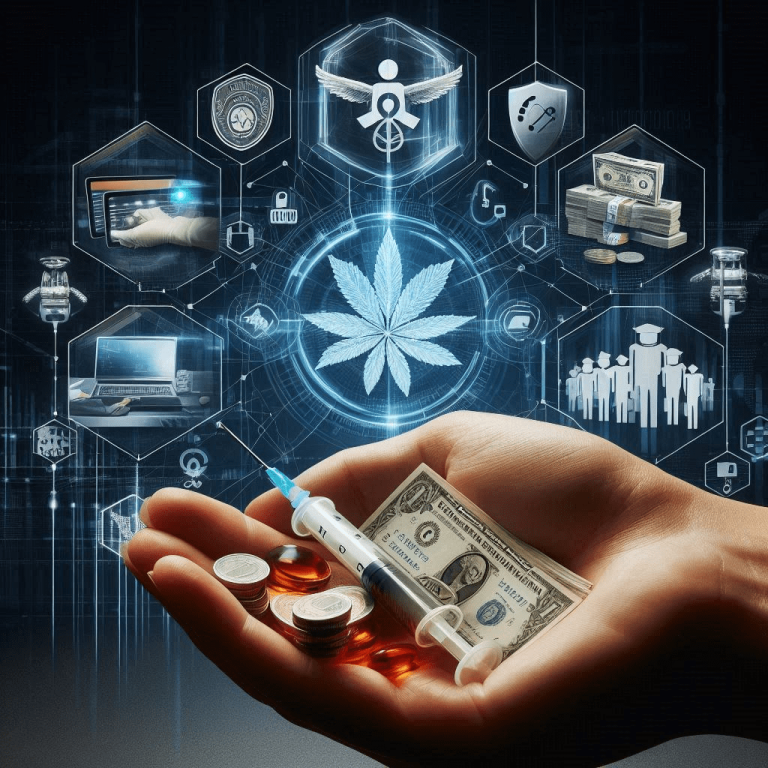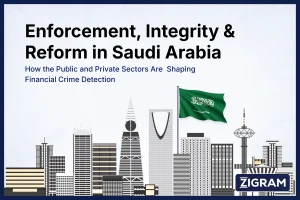Drug trafficking and money laundering are major global problems that cause significant economic and social harm around the world. These two illegal activities are closely connected: the money made from selling drugs needs to be cleaned or laundered so it can be hidden and used in legal financial systems. Traffickers use various illegal tactics like money laundering, fraud, human trafficking, and violence to keep their operations going and hidden. The huge profits from drug sales lead to complex financial schemes that hurt the integrity of global finance.

“The illegal drug trade remains strong. It’s estimated to be worth $650 billion globally, making up 30% of all illegal activities,” said the head of the Central Board of Indirect Taxes and Customs (CBIC) India, highlighting its serious impact.
Today, June 26th, is World Drug Day. It’s a day to remind us about the global drug problem and why it’s so important for countries to work together to stop drug trafficking and related crimes.
What Is Drug Trafficking?
Drug trafficking is a worldwide illegal trade that encompasses the cultivation, production, distribution, and sale of substances prohibited by drug laws. The United Nations Office on Drugs and Crime (UNODC) keeps a close watch on global illicit drug markets to develop a thorough understanding of their operations. These trafficking routes are often used for transporting other illegal goods and are frequently linked to crimes such as money laundering and corruption. The UNODC conducts ongoing research and monitoring of these global drug markets to deepen its understanding of their dynamics, with drug trafficking being a crucial focus. Detailed findings are published annually in the World Drug Report.
Recent Statistics On Drug Trafficking
- According to data from the UNODC/WHO/UNAIDS/World Bank published in 2023, approximately 20,000 people in Central America and about 100,000 people in the Caribbean engage in injecting drugs, underscoring significant regional challenges. (Source: INCB Annual Report 2023)
- Furthermore, new global estimates indicate that in 2021, there were 13.2 million people globally who inject drugs, marking an 18% increase from previous estimates. The overall number of drug users worldwide in 2021 exceeded 296 million, reflecting a notable 23% rise over the past decade. Concurrently, the number of individuals grappling with drug use disorders surged to 39.5 million, a substantial 45% increase over the same period. (Source: UNODC Press Release)
- In response to these escalating challenges, the United Nations Office on Drugs and Crime (UNODC) allocated USD 83.6 million in 2023 towards addressing and combatting the global drug problem. (Source: UNODC Annual Report 2023)
- Moreover, the Drugs-Crime Nexus in the Amazon Basin, as highlighted in the World Drug Report 2023, emphasizes the severe impact of drug trafficking on countries such as Brazil, Peru, Bolivia, and Colombia, which host significant portions of the Amazon rainforest. (Source: UNODC World Drug Report 2023)
- On a global scale, cannabis remains the most widely used drug, with an estimated 219 million users in 2021, comprising 4.3% of the global adult population. (Source: UNODC World Drug Report 2023 Executive Summary)
These statistics underscore the urgent need for concerted international efforts to address the complex challenges posed by drug trafficking and drug abuse worldwide.
Drug Trafficking And Money Laundering
Drug trafficking and money laundering are closely linked criminal activities, with drug traffickers often using the financial system to launder illicit profits. The global illicit drug trade is valued at around $400 billion annually, with up to $100 billion laundered through financial systems each year. Traffickers employ various methods, such as bulk cash smuggling and complex laundering techniques, working with money laundering networks to process large amounts of cash. Law enforcement agencies combat these crimes using collaborative mechanisms, like task forces, to investigate and prosecute offenders. Most countries have laws and regulations to deter money laundering and detect criminal activities.
Effective anti-money laundering (AML) frameworks help identify and stop illicit financial movements. By monitoring financial transactions related to drug crimes, authorities can spot patterns and connections within the drug trade, alerting law enforcement to suspicious activities and enabling the dismantling of trafficking networks.
The vast amounts of money generated from drug trafficking necessitate innovative and often fraudulent financial practices. This can include:
- Use of Shell Companies: Creating bogus corporations to disguise the origin of the funds.
- Trade-Based Money Laundering: Manipulating trade transactions to move money across borders, such as over-invoicing or under-invoicing goods.
- Cybercrime: Utilizing digital platforms and cryptocurrencies to move and hide funds swiftly and anonymously.
Such activities not only support the drug trade but also contribute to a broader spectrum of financial fraud, further complicating efforts to maintain economic integrity.
8 Effective AML Practices To Combat Drug Trafficking In 2024
Anti-Money Laundering (AML) procedures are essential in the battle against drug trafficking by preventing, detecting, and exposing financial activities tied to illegal operations.
Several AML strategies are effective in identifying and tracking individuals involved in the drug trade and halting the financial transactions that support their activities. Key AML practices include:
1- Know Your Customer (KYC) Financial institutions and regulated entities must understand their customers’ businesses and associated risks. KYC is crucial for identifying and monitoring those involved in the drug trade. By comprehending their customers’ business activities, authorities can scrutinize financial transactions and take action to dismantle drug trafficking networks.
2- Suspicious Activity Reporting (SAR) Financial institutions and regulated entities are required to report suspicious financial activities to law enforcement. This is vital in combating drug trafficking as it allows authorities to investigate and act against those involved in the drug trade.
3- Customer Due Diligence (CDD) CDD measures enable financial institutions to verify customer identities and assess their risk profiles. This process can reveal potential money laundering activities and suspicious transactions linked to drug trafficking.
4- Enhanced Due Diligence (EDD) EDD involves taking extra precautions when dealing with high-risk clients. This is essential for identifying and monitoring high-risk individuals and groups involved in drug trafficking. Enhanced measures allow authorities to oversee financial transactions and take action against drug networks.
5- Transaction Monitoring Financial institutions use transaction monitoring systems to detect suspicious activities related to drug trafficking. These systems can flag transactions that deviate from a customer’s usual activity, involve large cash amounts, or include transfers to high-risk countries.
6- AML Screening During the onboarding process, financial institutions screen prospects to prevent false positives. By integrating critical entity information with external data, a multi-dimensional algorithm improves matching outcomes and reduces false positives.
7- Risk Assessment Financial institutions use risk assessment models to identify customers and transactions that pose higher money laundering risks. This allows them to focus resources on higher-risk areas and activities related to drug trafficking.
8- Artificial Intelligence (AI) and Machine Learning (ML) AI and ML technologies analyze large volumes of financial data to detect patterns and anomalies that indicate potential money laundering activities related to drug trafficking.
These AML practices are instrumental in the ongoing battle against drug trafficking by ensuring financial institutions remain vigilant and proactive in identifying and disrupting illicit financial activities.
ZIGRAM’s Solutions For Combating Drug Trafficking
ZIGRAM leads the way in leveraging AI and ML to strengthen Anti-Money Laundering (AML) measures against drug-related crimes, particularly in the cannabis industry. Specializing in AML solutions, transaction monitoring, and screening for high-risk entities like Politically Exposed Persons (PEPs), ZIGRAM employs cutting-edge technology to safeguard operations. Our extensive database includes detailed profiles of Marijuana-Related Businesses (MRBs) and their Ultimate Beneficial Owners (UBOs), providing crucial insights for stakeholders such as investors, policymakers, and compliance officers. This data is instrumental in ensuring thorough oversight of AML risks linked to individuals and organizations involved in handling marijuana products. For greater safety and success in combating financial crimes, explore ZIGRAM’s tools through a demo or consultation today.
- #DrugTrafficking
- #MoneyLaundering
- #AntiMoneyLaundering
- #AML
- #FinancialCrime
- #GlobalSecurity
- #FinancialCrime
- #WorldDrugDay
- #UNODC
- #FinancialIntegrity
- #CrimePrevention
- #DrugTrade
- #GlobalCollaboration
- #LawEnforcement
- #ArtificialIntelligence
- #FinancialSystems
- #MachineLearning
- #RiskManagement
- #Compliance
- #FraudPrevention
- #DrugAbuse
- #PublicSafety
- #EconomicStability
- #Financialcrimes
- #FCC






